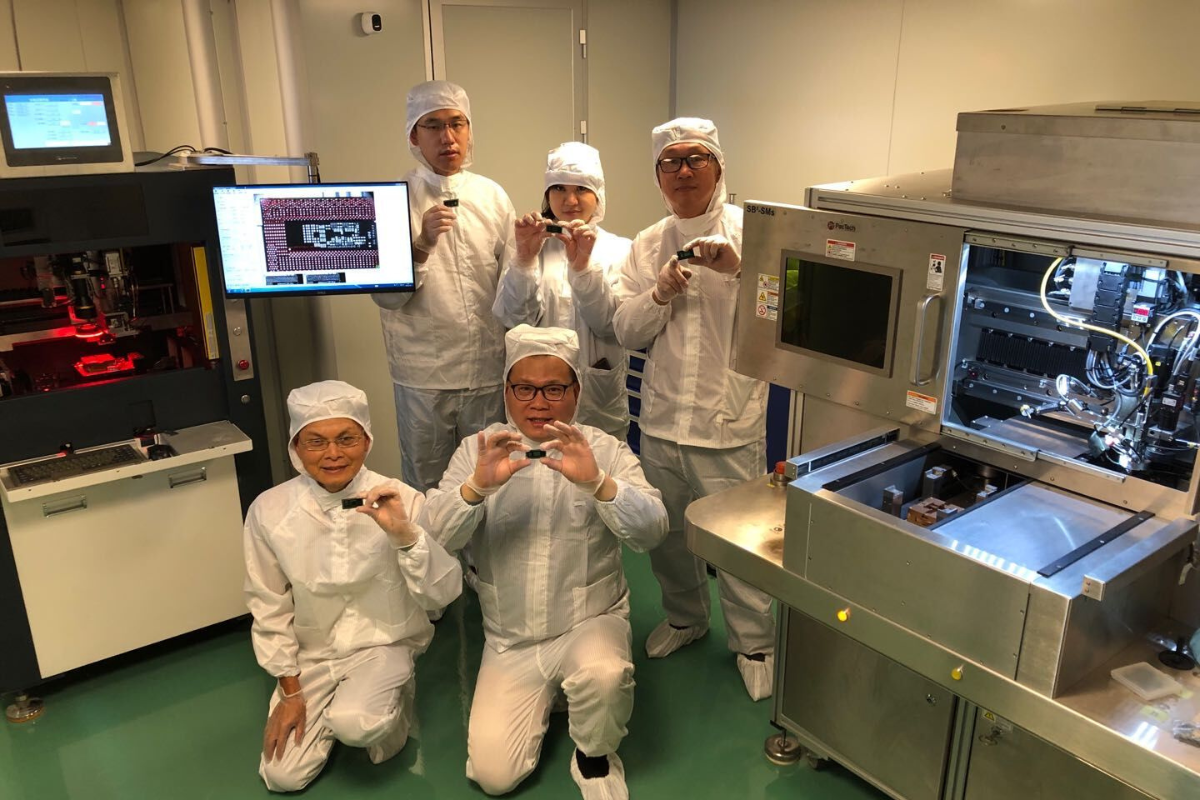
Workers at Toyoshima Green Technology hold up chips. | Courtesy of Toyoshima Green Technology
A Texas company is using robotic technology to remove chips from circuit boards, recovering the chips for resale while leaving the boards with valuable metals for shipment to a smelter.
McKinney, Texas-based Toyoshima Green Technology uses a robot to remove circuit boards from scrap electronics, and then it uses another system to harvest chips from the boards.
Dan Wang, president and co-founder of Toyoshima Green Technology, said his company is currently recovering chips for Wistron GreenTech and eSCO Processing and Recycling facilities in the U.S., as well as another company that wishes to remain anonymous.
Toyoshima Green Technology has its roots in Taiwan in the semiconductor refurbishing industry and has been operating in the U.S. for seven years. The company is not only processing high-value chips but also lower-value ones, Wang explained.
The core technology uses Toyoshima’s semiconductor packaging and testing technologies to remove chips from scrap PCBs and refurbish them for resale.
“By offering chip price instead of e-waste price, Toyoshima Green Tech shares chip profit with recyclers to encourage them to disassemble the machine or device, so less e-waste ends up in landfills,” Wang wrote.
After harvesting the chips, Toyoshima GreenTech refurbishes, wipes data, tests, packages and resells the chips. Toyoshima sends the boards, which retain their valuable metals, to Mitsubishi Materials in Japan for smelting and metals recovery.
According to a write-up from Wang, the semiconductor refurbishing industry is seeing opportunities driven by recent shortages of chips. It also noted that large CPU manufacturers are reluctant to restart production of older chips, which can leave large numbers of otherwise usable laptops that simply lack CPUs. He also pointed to the need for lower-cost electronics in regions such as Africa, the Middle East and India.
Toyoshima Green Tech developed its automated technologies out of necessity, Wang wrote.
When the company first came to the U.S., the motivation was to use its semiconductor packaging and testing capabilities to refurbish chips to sell for profit, Wang wrote. Unfortunately, the company found that what was available wasn’t individual chips but intact devices. The company developed the automated disassembly and chip removal technologies as a result. (Toyoshima Green Tech demonstrated the device disassembly robot, which separates electronics into PCBs, plastic and metal components, at the 2023 E-Scrap Recycling and E-Reuse Conference.)

